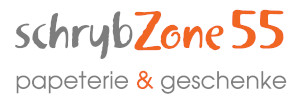Beschreibung
In the 1990s, the concept of flatness was introduced by Fliess, Lévine, Martin and Rouchon for nonlinear continuous-time systems. Continuous-time flat systems have the characteristic feature that all system variables can be parameterized by a flat output and its time derivatives. Their popularity stems from the fact that a lot of physical systems possess the property of flatness and that the knowledge of a flat output allows an elegant solution to motion planning problems and a systematic design of tracking controllers. In practical applications, nevertheless, such continuous-time control laws are usually implemented on digital computers/processors with finite sampling rates. However, if the dynamics of a system is high compared to the sampling rate, a discrete evaluation of a continuous-time control law may lead to unsatisfactory results or even unstable behavior. As known from linear control theory, designing a controller for a suitable discretization (sampled-data system) is an appropriate alternative. Due to these considerations, in this thesis, we discuss the concept of flatness as well as flatness-based control strategies within the discrete-time framework. This work can be divided into two parts: the theory of discrete-time flatness and practical applications of discrete-time flatness. For the first part, we will recall basic differential-geometric concepts in order to characterize discrete-time flat systems. In addition to a rigorous definition of discrete-time flatness, these geometric concepts allow us to formulate methods to check this property for a particular class of systems. The second part focuses on practical applications. In this context, methods will be presented that allow discretizing nonlinear systems without losing the flatness property. Once a flat sampled-data system is obtained, trajectories can be easily planned and tracking controllers systematically designed. By means of the laboratory setup of a gantry crane, we show that with respect to low sampling rates, the discrete-time flatness-based controller is indeed more robust than the classical continuous-time approach.














